
 “The success of ChatGPT should not merely be seen as a breakthrough in the next generation of chatbots, but rather as a revolution for artificial intelligence and the entire information industry.”
“The success of ChatGPT should not merely be seen as a breakthrough in the next generation of chatbots, but rather as a revolution for artificial intelligence and the entire information industry.” Recently, the chat AI ChatGPT has been in the spotlight, and intelligent robots have once again “gone viral”! On the 5th floor of the Quanzhou Science and Technology Museum, an artificial intelligence exhibition area has been set up. Chess-playing robots, painting robots, ball-sorting robots…… Here, we can learn about the applications of artificial intelligence through interactive games, while also experiencing emerging technologies~
Recently, the chat AI ChatGPT has been in the spotlight, and intelligent robots have once again “gone viral”! On the 5th floor of the Quanzhou Science and Technology Museum, an artificial intelligence exhibition area has been set up. Chess-playing robots, painting robots, ball-sorting robots…… Here, we can learn about the applications of artificial intelligence through interactive games, while also experiencing emerging technologies~
Chess-playing Robot
 AlphaGo defeated the world Go champion in 2016, successfully bringing artificial intelligence into the mainstream! “Playing chess” seems to be a piece of cake for robots; on the 5th floor of the Quanzhou Science and Technology Museum, there is a “chess-playing robot.” If you are confident in your chess skills, why not come and challenge it!
AlphaGo defeated the world Go champion in 2016, successfully bringing artificial intelligence into the mainstream! “Playing chess” seems to be a piece of cake for robots; on the 5th floor of the Quanzhou Science and Technology Museum, there is a “chess-playing robot.” If you are confident in your chess skills, why not come and challenge it!
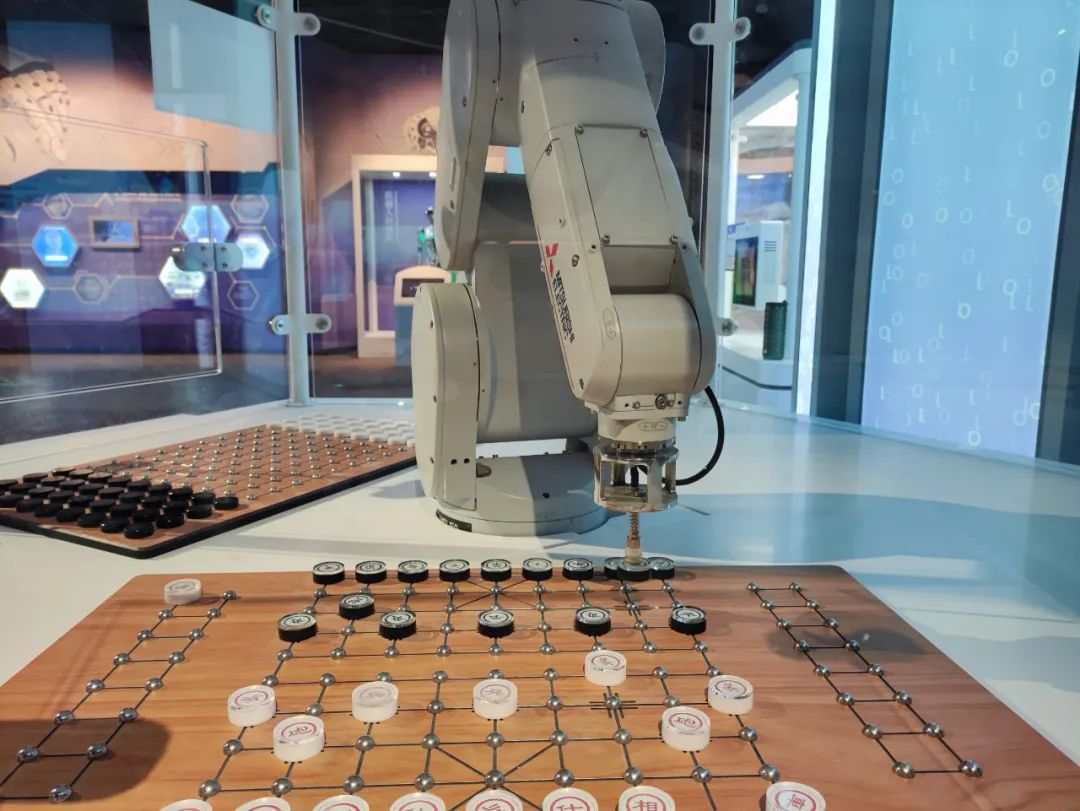
“The chess-playing robot” has two modes: Chinese chess and Gomoku. The computer can determine the player’s moves through the infrared camera sensor system at the top of the display. Based on internal program calculations, it controls the robotic arm to make its own moves and compete with participants.

Even more impressively, our robot can simultaneously play chess and Gomoku with two participants; quickly choose your preferred game to try it out~
High-Speed Ball-Sorting Robot
 Compared to the chess-playing robot, you might be less familiar with the high-speed ball-sorting robot. The ball-sorting robot utilizes the high-speed movement characteristics of a spider-like robotic arm, combined with the powerful computing capabilities of a computer, to quickly complete the classification of different colored balls.
Compared to the chess-playing robot, you might be less familiar with the high-speed ball-sorting robot. The ball-sorting robot utilizes the high-speed movement characteristics of a spider-like robotic arm, combined with the powerful computing capabilities of a computer, to quickly complete the classification of different colored balls.
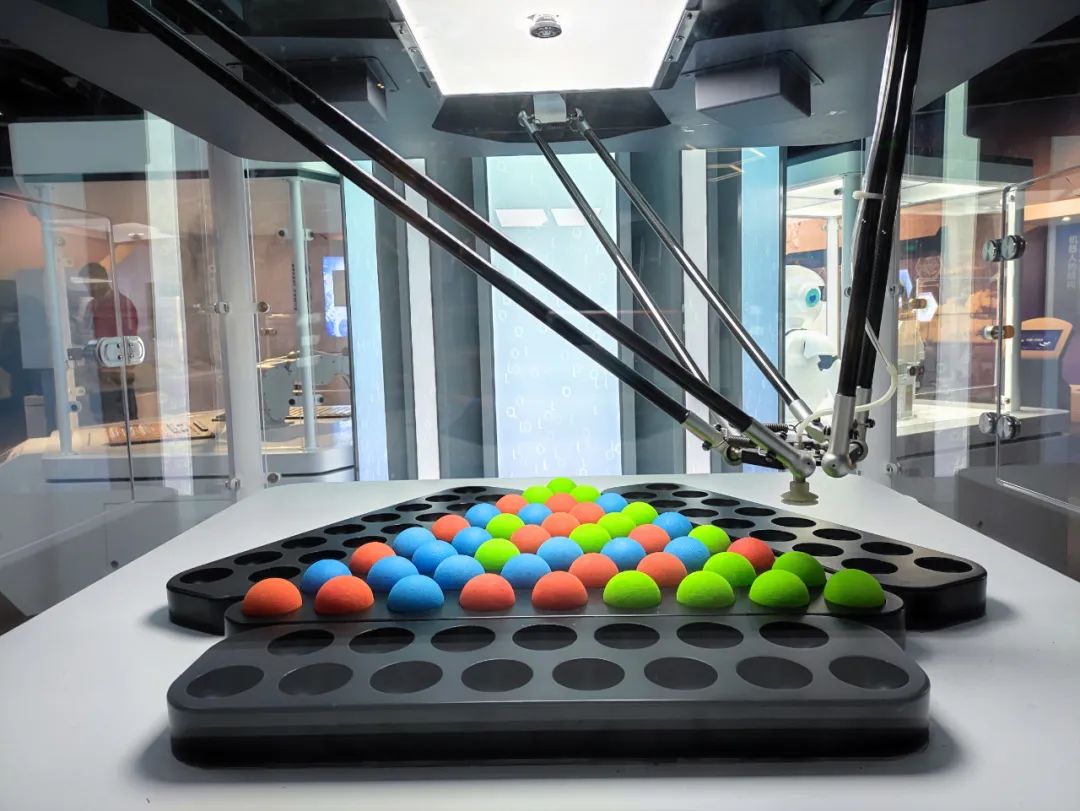
Robot Painter
 The exhibit called “Robot Painter” is a “popular contestant” in the technology era exhibition hall. Regardless of age, visitors often find themselves sitting in the designated position to experience it!
The exhibit called “Robot Painter” is a “popular contestant” in the technology era exhibition hall. Regardless of age, visitors often find themselves sitting in the designated position to experience it!

As a robot capable of independently drawing portraits, it uses edge processing software to determine the structural distribution of the artwork while using a pencil to capture the overall feel. While it is very easy for a computer to replicate an image, as people can easily use a plotter for duplication, it is much more challenging to have a robot draw a portrait by “watching” a model.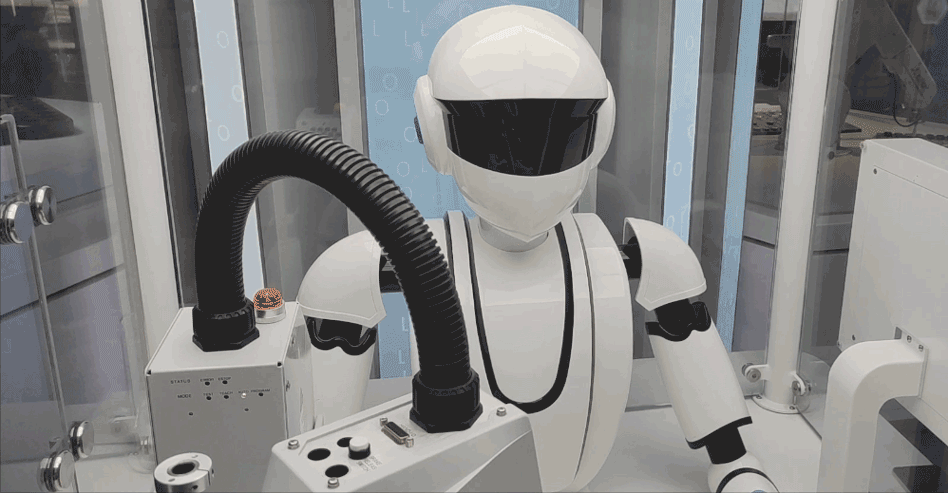 In this process, we can experience the unique sensation of machines replacing humans in painting, and appreciate the immense charm brought by technological innovation.
In this process, we can experience the unique sensation of machines replacing humans in painting, and appreciate the immense charm brought by technological innovation.
Humanoid Robot
 This is the robot that resembles a “human” the most in the entire artificial intelligence exhibition area, known as the humanoid robot, or anthropomorphic robot.
This is the robot that resembles a “human” the most in the entire artificial intelligence exhibition area, known as the humanoid robot, or anthropomorphic robot.
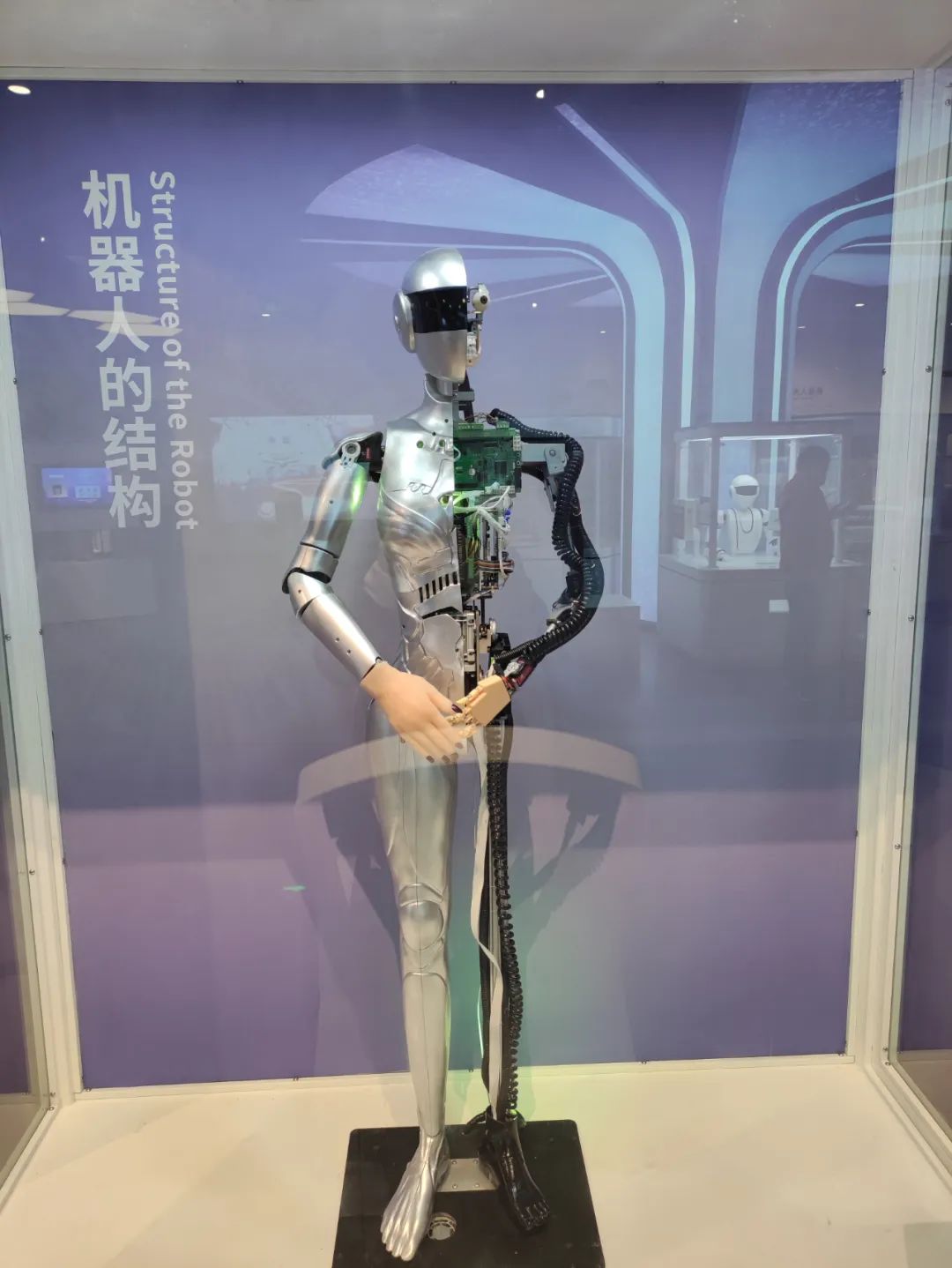
One side of the humanoid robot in the exhibition hall has its shell removed to display its internal structure, allowing everyone to observe the internal components more intuitively.
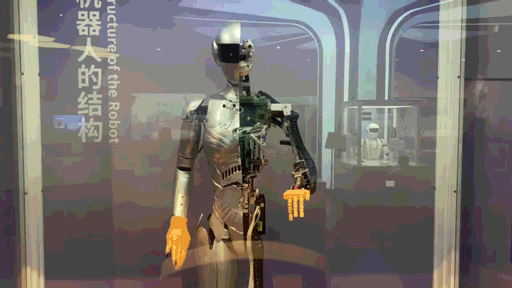
While experiencing this exhibit, visitors can control its joints through a touch screen to perform movements, allowing them to see how the robot’s internal structure operates.
Industrial Robot
 If you ask which robot is the most widely used, the answer is undoubtedly the “industrial robot”! Industrial robots are multi-degree-of-freedom mechanical devices designed for industrial applications. They can automatically perform tasks, relying on their own power and control capabilities to achieve various functions. They can accept human commands or operate according to pre-programmed instructions; modern industrial robots can also act based on principles set by artificial intelligence technology.
If you ask which robot is the most widely used, the answer is undoubtedly the “industrial robot”! Industrial robots are multi-degree-of-freedom mechanical devices designed for industrial applications. They can automatically perform tasks, relying on their own power and control capabilities to achieve various functions. They can accept human commands or operate according to pre-programmed instructions; modern industrial robots can also act based on principles set by artificial intelligence technology.
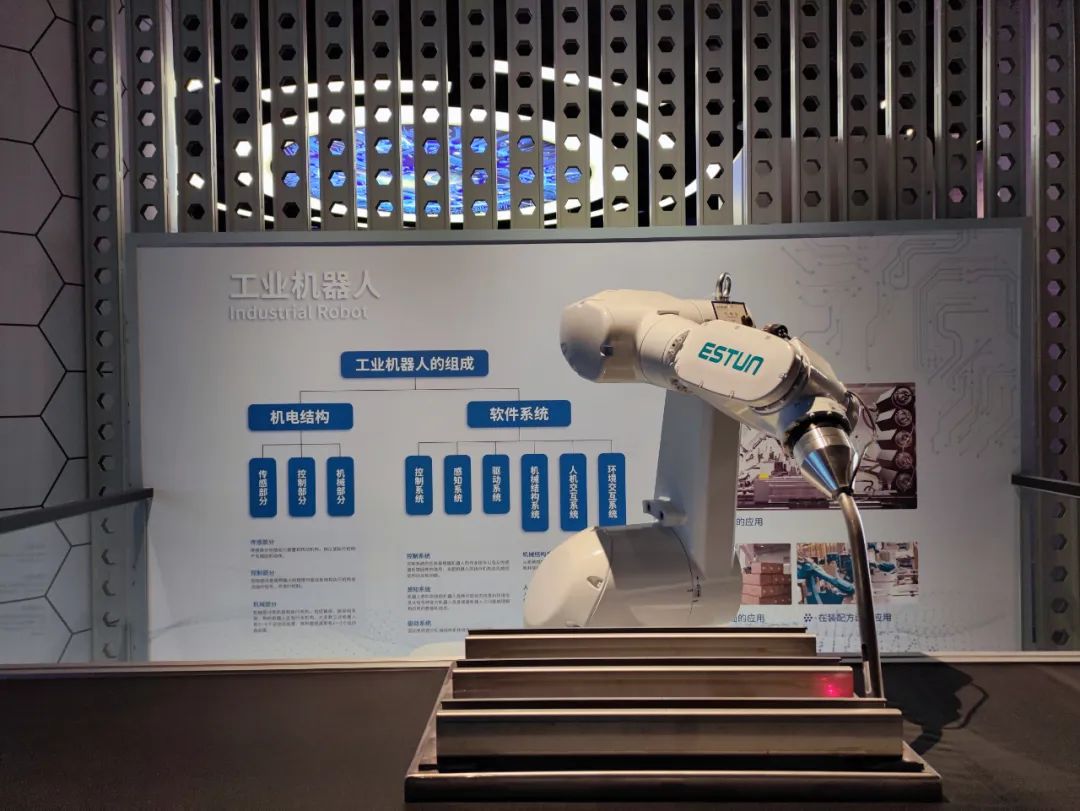
In the artificial intelligence exhibition area, we used multimedia to showcase a production line where robots manufacture cars: industrial robots work in harmony, and more importantly, robots “work hard without pay,” making them very popular “employees” among entrepreneurs.
Autonomous Driving Technology
 Autonomous vehicles are a type of intelligent vehicle, also known as wheeled mobile robots, primarily relying on an intelligent driving system based on a computer system to achieve the goal of driverless operation.
Autonomous vehicles are a type of intelligent vehicle, also known as wheeled mobile robots, primarily relying on an intelligent driving system based on a computer system to achieve the goal of driverless operation.
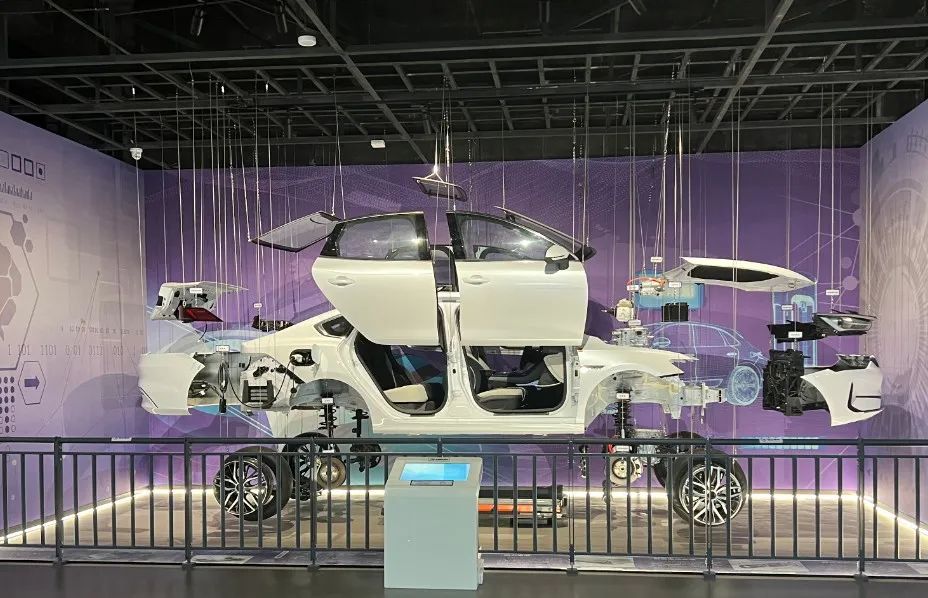
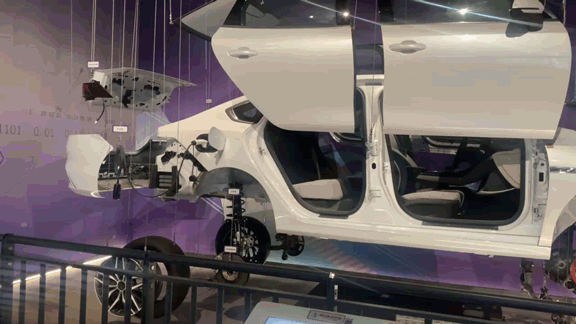
Our exhibit features a large simulated scene, combining a model of an autonomous vehicle with a touch display, allowing us to intuitively understand how autonomous driving technology avoids obstacles and ensures travel safety.
Robot Performance Stage
 Biped humanoid robots are the “little stars” of the artificial intelligence exhibition area. They utilize mechanical manufacturing technology, intelligent control technology, and wireless transmission technology to perform various exciting dance programs such as “Thousand-Hand Guanyin,” “Tai Chi,” “Street Dance,” and “Crosstalk.”
Biped humanoid robots are the “little stars” of the artificial intelligence exhibition area. They utilize mechanical manufacturing technology, intelligent control technology, and wireless transmission technology to perform various exciting dance programs such as “Thousand-Hand Guanyin,” “Tai Chi,” “Street Dance,” and “Crosstalk.”
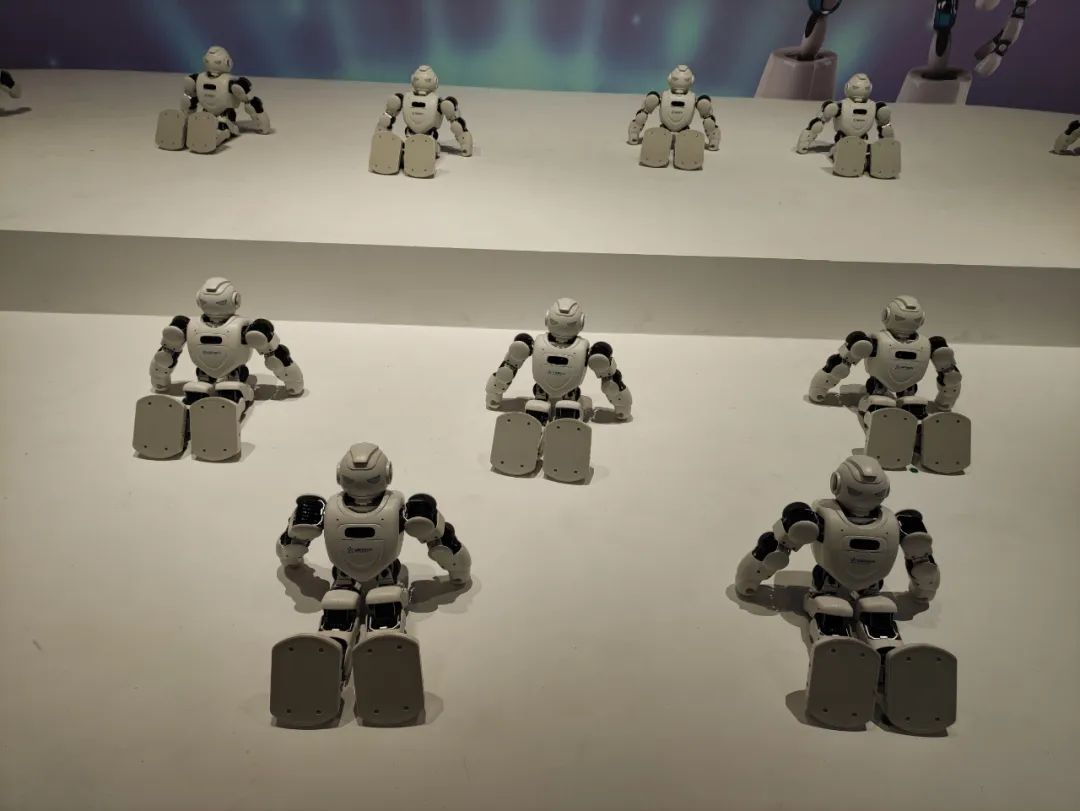
The exhibit called “Robot Performance Stage” consists of 15 “little stars,” each robot equipped with an inclination sensor, allowing them to quickly get back up and continue performing even if they fall while executing various difficult movements.
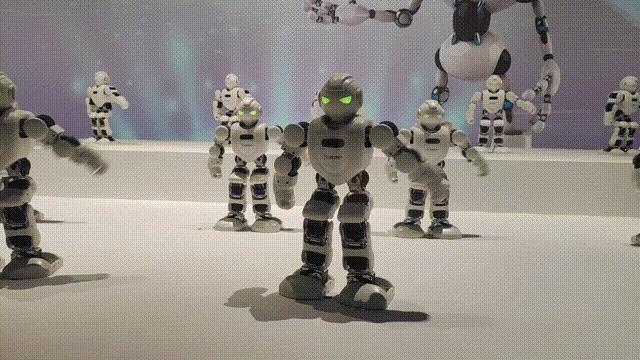
After seeing so many robots, do you have a better understanding of artificial intelligence? “To truly understand this matter, one must practice it!” If you want to personally experience the charm of artificial intelligence, you are welcome to visit the Quanzhou Science and Technology Museum~
